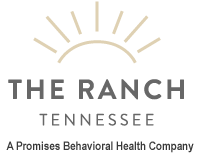Jay and Lea met like many couples do these days—on an Internet dating site. The two had a great deal in common, more even than they understood from the rampant get-to-know-you messages the two passed between them. Private messages soon turned into texting and video chatting, and eventually the pair decided to meet. Their attraction was undeniable. While they’d created something of an intimate connection through the course of their digital communications, this new medium—face-to-face—definitely heightened the experience. Both Lea and Jay felt certain they were “meant to be” together. The trouble was that both Jay and Lea had a problem with alcohol, as well as a tendency to become easily provoked and quickly aggressive. Jay was a heavy binge drinker and Lea liked to say she couldn’t sleep without at least a couple glasses of wine. Two glasses quickly became four, which soon became an entire bottle. It was her habit from the start to hide her consumption from Jay, even though he was a drinker himself, and had never mentioned that it might be a deal breaker. When Jay drank, he often became unruly and impulsive, which allowed Lea to pretend only he had a problem. Arguments quickly escalated into fights that grew more extreme. Physical violence began to occur. The infusion of alcohol into an already fragile early-relationship stage made things vastly more complicated for the couple, but what Jay and Lea discovered in those first few months was that they shared a similar childhood history. Jay’s father had been a combat veteran with PTSD and had been a severe alcoholic. After his service, Jay’s dad had come home a different man. Jay was often the target of his father’s rages and throughout his youth, he’d witnessed his parents fighting to the brink of violence. And Lea’s story was incredibly similar. Her father had been an alcoholic with a violent streak and her parents tended to wage war rather than argue. There were nights she’d been dragged from bed to play mediator for them, and when the violence erupted, she found herself as much a target as her mother. The individual pain the couple had experienced was now a shared pain. Jay and Lea could talk to one another about their pasts and each had total empathy for the other; the other had been there. This childhood legacy of addiction and violence, however, had shaped a psychological template for each of them. They were repeating the trauma they’d experienced growing up by acting it out on one another. Their problem was far bigger than one of needing to get sober—which was complicated enough. It was woven throughout the bond the couple experienced, a bond largely sealed with the experience of past trauma and present retraumatization.
What Is Trauma Bonding?
Bonding is both an emotional and a physiological process that occurs in a relationship and increases over time. As a couple gets to know one another, spends more time together and exhibits affection and sex, oxytocin—the bonding hormone—floods the brain and body and allows the two to deeply unite within the universe of their shared experience. Bonding has an evolutionary advantage; it allows us to cooperate in groups, to remain attached and open to one another, and to develop a connection that can withstand ups-and-downs. Such connections help ensure our survival in a very literal sense, but they also make life more comforting and enjoyable. Bonding doesn’t just occur through the course of positive words, affection and time together, however. Many couples who experience shared adversity, or who share intense conflict between them, often tend to grow more attached over time, rather than less—even when the attachment is not advantageous to their mental or physical well-being. Dr. Patrick Carnes, groundbreaking expert on sex and love addiction and author of The Betrayal Bond: Breaking Free of Exploitive Relationships, coined the term “trauma bonding” in order to convey the intense bond that can develop between individuals when a relationship contains fear, excitement and sexual attraction, not in spite of abandonment or betrayal, but because of it.
Retraumatization in Trauma Bonding
It’s not surprising then that many individuals who experience trauma bonding come from early childhoods rife with conflict, chaos or neglect. When people repeat a pattern with a romantic loved one that they experienced first at the hands of abusive caregivers, they can be said to be retraumatizing themselves. The biological model states that repeated stressful events change our neurochemistry and may cause us to recreate stressful events as a way of maintaining emotional homeostasis (i.e., high stress and conflict become familiar and “comfortable” to us). A psychoanalytical model explains that retraumatization likely occurs because of unresolved emotional content based on the original stress; we unconsciously repeat past trauma until we become aware of and resolve it. Both models may work in conjunction. In the meantime, couples bonded in betrayal continue to play out their early stories of fear, chaos and high stress, never understanding why they can’t just walk away.



